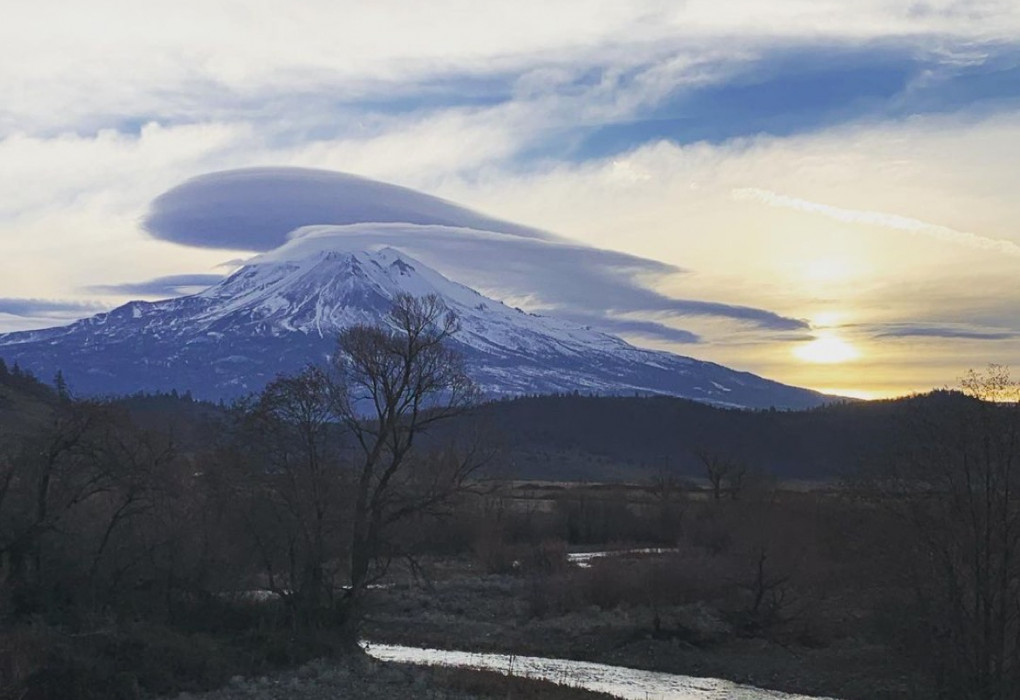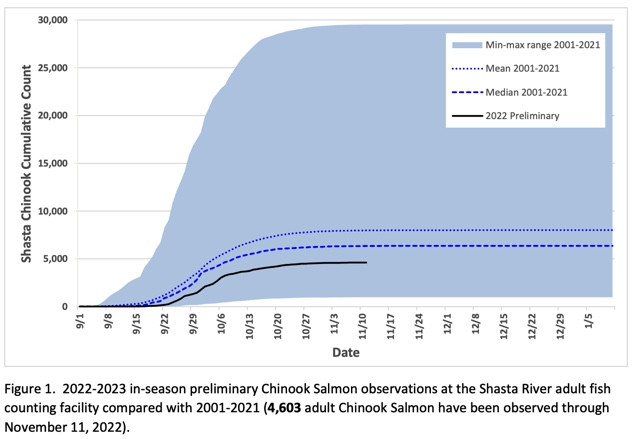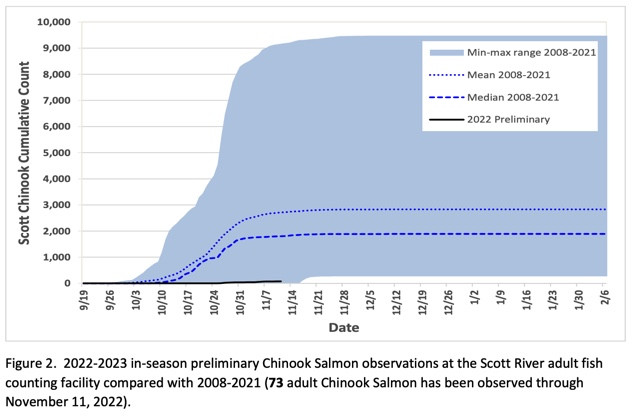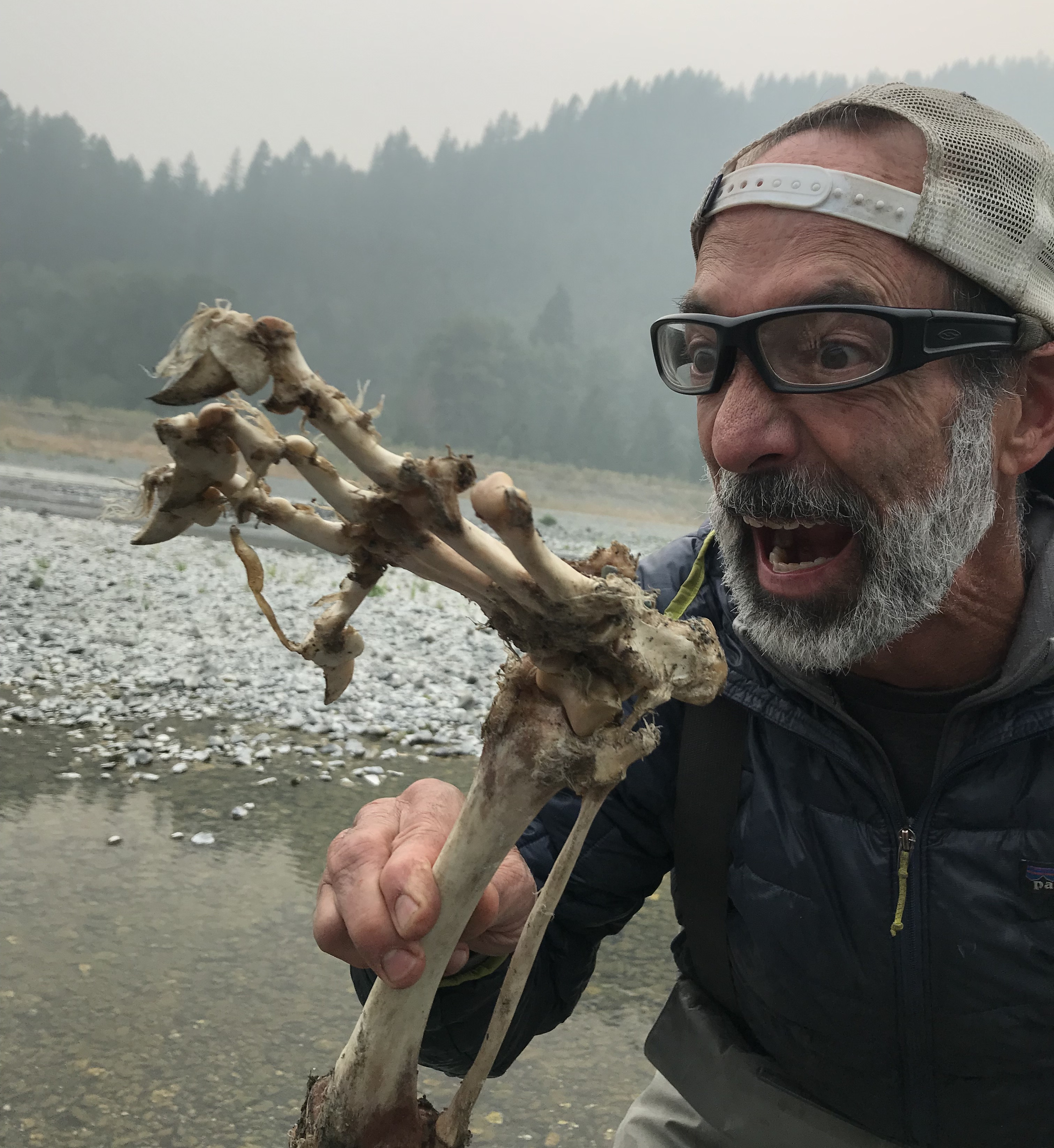The Struggle Continues in Northern California
On Thursday, November 17, 2022, the Federal Energy Regulatory Commission announced the final step approving the removal of the four lower Klamath River Dams, starting the largest dam removal project in history. Undoubtedly, this watershed will thrive without these dams and will continue to help restore wild native fish throughout the entire Klamath Basin.
This winter, I want to highlight two of the Klamath River’s most popular tributaries that already provide thousands of salmon and steelhead to the basin, the Shasta and Scott Rivers. These key tributaries provide ideal habitats for fall chinook, steelhead, and ESA-listed coho salmon. Yet, they have long since been overlooked for their amazing watershed qualities that provide so much to the communities of Northern California and the Klamath Basin.
The Shasta and Scott Rivers provide important spawning and rearing habitats that suffer, due to irrigation practices, through dry summer months. The Klamath basin has been in a multi-decade drought that, with no doubt in my mind, has affected farmers, ranchers, and the commercial fishing industry. On the flip side, these same conditions are affecting the tribes, fish, rivers, and people of Northern California.
This summer the Shasta River Water Association in northern California decided to ignore state waterboard regulations and illegally divert water from the Shasta River to irrigate their crops and pastures for livestock grazing. Diverting this water immediately dropped the river below drought emergency mandated Total Daily Minimum Flows set by the California State Waterboard. Because most of the Shasta River flows through private land, the fish impact on the sudden drop in flow was evident based on the sight of dry redds and stranded juveniles in publicly accessible areas.
Flows were not restored until days later. Unfortunately, these actions are all too familiar for the Shasta River where diversions equal drought level flows every summer.
Summer is over, but CDFW’s recently released fish counting update for these two key tributaries is shocking. The major concern is the lack of flows in the Scott River. Irrigators have been sucking the Scott River dry, not allowing any flows through the summer for wild salmonids. Low flows mean high water temperatures and deadly conditions for steelhead and coho juveniles that rear in their homewaters for over a year before traveling to the ocean.
It clearly shows the waterboard and state regulators give favorable priority to farmers and ranchers when they fail to enforce laws while ESA-listed Coho salmon dwindle before our very eyes. The time has come that we as a community, decide to support the fish and natural ecosystem. We must restore the historical flows of the Scott and Shasta Rivers before it's too late.
Once again, please tip your hat to Shasta River Steward Andy Marx. His watchful eye and continued advocacy is making a difference on the Shasta. Though Andy is focused primarily on the Shasta, he is the instrumental advocate who pointed me toward the neglect and ignorance of the regulators on the Scott River, advising on who to reach out to and how we can help.
And that’s what we ask for today: your advocacy. The time has come for the wild fish community to create a groundswell of public support advocating for the restoration of historical flows to the Scott and Shasta Rivers. It's our turn as advocates to step up and hold the regulating authorities accountable.
Please call the California water board today Phone: 916-327-3113 or send them an email at: ScottShastaDrought@waterboards.ca.gov. Voice your concerns for these fish and the long-term sustainability of the entire ecosystem of northern California.
Follow that advocacy up by giving Governor Newsom's office a call Phone: (916) 445-2841 or leave him a comment here. Share your concerns and how you would like the waterboard to prioritize the amazing fish of northern California.
Together, we can make a difference helping restore abundant wild fish, free-flowing rivers, and thriving local communities. If you want to learn more about the waters of Northern California, become a steward on the Scott, or have any questions, please contact our Northern California Coordinator, Kirk Blaine, today.



